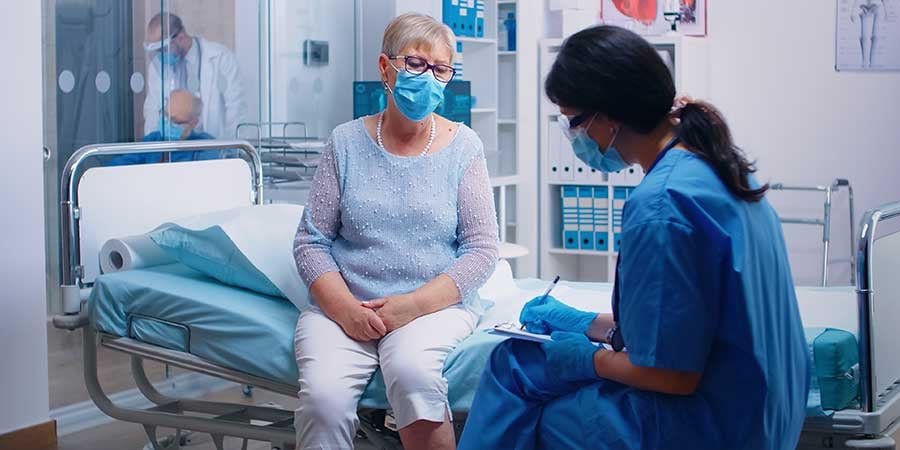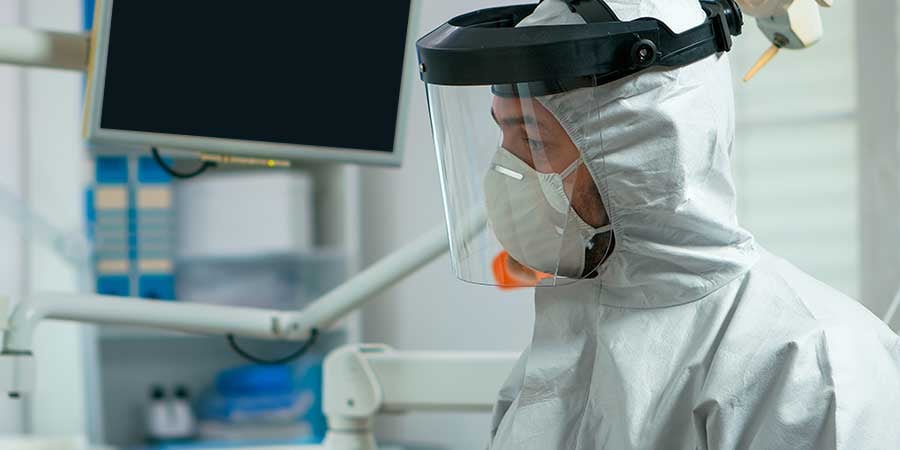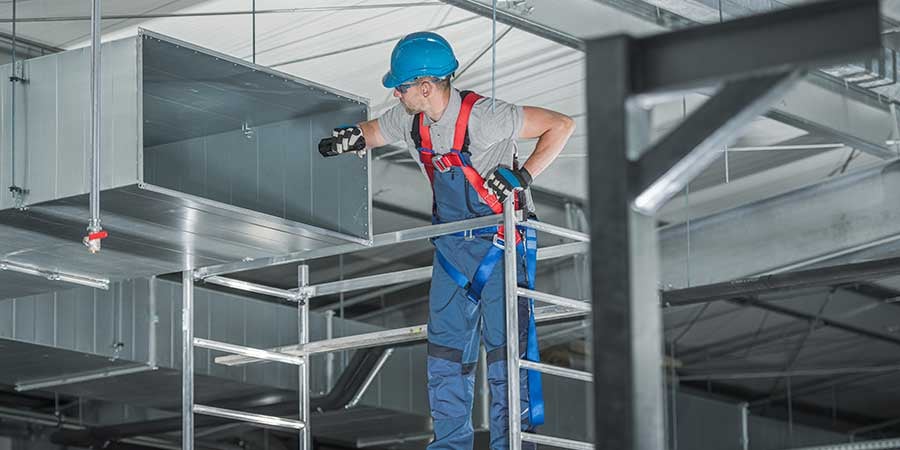Share this
Pair HVAC & Humidification to Keep Air Clean In Healthcare Facilities During Winter
by HEPACART on Feb 24, 2021
We all know that air quality affects occupants’ health significantly — so what can we do about it?
As an experienced healthcare facilities director, you know that your HVAC system significantly impacts a facility's overall air quality and that quality affects occupants significantly. For hospitals, urgent care sites, ambulatory care centers, and other healthcare facilities, maintaining proper temperature and humidity alone can make the difference between life and death for at-risk and elderly patients.
According to OSHA, one of the most common indoor air quality problems is high humidity caused by poor ventilation, heating, and air conditioning systems. When HVAC underperforms, humidity rises, and condensation can form, promoting the growth of molds and bacteria.
However, the opposite problem — winter heating making indoor air too dry — is also widespread, and it's what we'll be discussing in this post. Super-dry indoor air is good for airborne bugs but bad for your respiratory tract, your electronic devices, even furniture and wood floors.
Indoor air should be not too wet but not too dry
When your facility is heated during the winter, the relative humidity can drop as low as 10% (about the same as the Sahara Desert) if there is no supplemental humidification. To prevent several bad things from happening, humidity should be maintained within what we'll call the Goldilocks range: not less than 40% but not over 60%. 
It's been known for over 30 years from epidemiological studies that maintaining moderate levels of humidification decreases the survival rate and infectivity of airborne infectious bacteria and viruses. There's more than one reason for this.
1. In properly humidified air, pathogens drop out of the air more quickly because they're heavier. When air is dry, the particles become smaller and lighter and can remain airborne longer.
2. Moisture in the air has been shown to make viruses less infectious. That is one reason wearing masks helps — you're humidifying the air you breathe with exhaled water vapor.
3. Our respiratory systems function better to trap and eject foreign particles when the air's not too dry. Mucus membranes stay hydrated, making them more effective at trapping particles, and the cilia that move particles out of the lungs and upper respiratory tract work better.
4. When not dried out, cells lining the respiratory tract are better able to create an immune response to foreign invaders.
5. Dry air does not suppress static electricity, and all it takes is one big spark to damage some electronic devices. Yep, preventing electrostatic discharge by humidifying indoor air is a thing.
6. Some architectural finishes and furniture actually require humidity between certain limits to maintain warranties.
But if humidity is so good, why stop at 60%? Here's why: most species of fungi thrive and grow at higher humidity levels. As mentioned earlier in this post, molds and bacteria in indoor air are a widespread problem caused by poorly designed or maintained HVAC systems.
An overview of indoor humidification
We have established that good facilities management involves taking action to make sure humidity stays in the sweet spot between too much and too little. How, then, does one go about adding indoor humidity control in commercial HVAC systems?
Before talking to vendors, it's worthwhile to understand some basic principles and terms. Generally, there are two processes by which humidification is achieved, adiabatic or isothermal.
Isothermal humidification occurs when steam is created from an external source and introduced into the airstream. This allows very precise control of temperature and provides a high level of hygiene because the medium has a temperature above the boiling point of water.
Adiabatic humidification occurs when water droplets are mechanically introduced into the airstream. You may have heard of adiabatic cooling, which is used outdoors sometimes and involves the same process. That's because the process of evaporation, in which water undergoes a state change from a liquid to a gas, absorbs heat from the air.
Adiabatic cooling may occur through evaporation, atomization with fine spray nozzles, or ultrasonic methods that use high-speed vibration to propel water droplets into the air. While less expensive than steam systems, they require the existing heating system to work harder to replace the heat energy lost to evaporation, and they also require purified water supplies.

Here's a look at some different adiabatic humidification equipment categories from a comparison chart published by the Air Conditioning, Heating, and Refrigeration Institute.
- Centrifugal - Simple, cheap, generally used in open spaces such as greenhouses
- Compressed Air and Water - Adaptable to ducted systems; requires compressed air and purified water, and sufficient pre-heat of air supply
- High-Pressure Atomizers - Same benefits as compressed air and water; no compressed air needed
- Ultrasonic - Uses piezoelectric discs to atomize water; needs deionized water; requires sufficient pre-heat of air supply; needs monitoring of reservoir liquid level
- Wetted Media Evaporative - Lower investment and operating costs
Other HVAC considerations
Although we've been focusing on humidification, there are many other aspects of heating, ventilation, and air conditioning that require attention for indoor air to be safe to breathe. The CDC recommends that your HVAC system be inspected and maintained in accordance with recommendations found in ASHRAE Standard 120-2018.
Further, ASHRAE has these general suggestions for configuring and operating your HVAC system:
- Passive isolation
- Strategically utilize aII rooms
- Airflow from clean to less clean
- Increase filtration level if possible
- Guidance on recirculation and increased outside air fraction
- Maintain relative humidity at 40-60%
- Deactivate or by-pass heat recovery wheels
- Improve/consider room airflow direction/patterns
- Utilize portable anterooms/vestibules with HEPA filtration
- Utilize UV light (see Facilities/maintenance – disinfection)
A competent HVAC consultant will be familiar with all of this, but you can get a sense of what can be done by reading the information linked above. One thing not mentioned above is the benefit of adding far-UVC lighting to inactivate pathogens as they flow through HVAC air handlers.

Finally, not all indoor air problems can be solved with best-practice HVAC system design and maintenance. Reducing viral load in the air when COVID-19 and other infectious diseases are present requires supplemental equipment that you can read about our post, 4 Ways to Destroy Airborne Pathogens in Public Spaces.
Conclusion
Healthcare facilities rarely rely on simple, stand-alone humidifiers such as those found in the home or office buildings. Such large facilities must provide humidification by integrating it with building HVAC systems. When deciding on a humidification technology, you may find your options limited by budget constraints, but always keep in mind the high importance of precise temperature and humidity control in reducing infections from airborne pathogens.
While HVAC and humidification can help fight against the spread of viruses like COVID-19 that thrive in dry winter conditions, supplemental solutions should be considered. Using ventilation equipment with HEPA filters, negative air machines, and air scrubbers inside patient rooms and common areas can help keep the air clean and pathogen-free.
Consider adding these tools to your air control and infection control toolbox:
- HEPAFORCE® AIR Negative Air Machines and Scrubbers
- HEPAFORCE® GermBuster Room Air Purifiers (far-UVC disinfection options available)
- Airborne Disinfection Module with UV-FORCE® (features HEPA filters and far-UVC disinfection)
For more on infection control in your healthcare facility, read our practical guide to infection control for healthcare facility managers.


